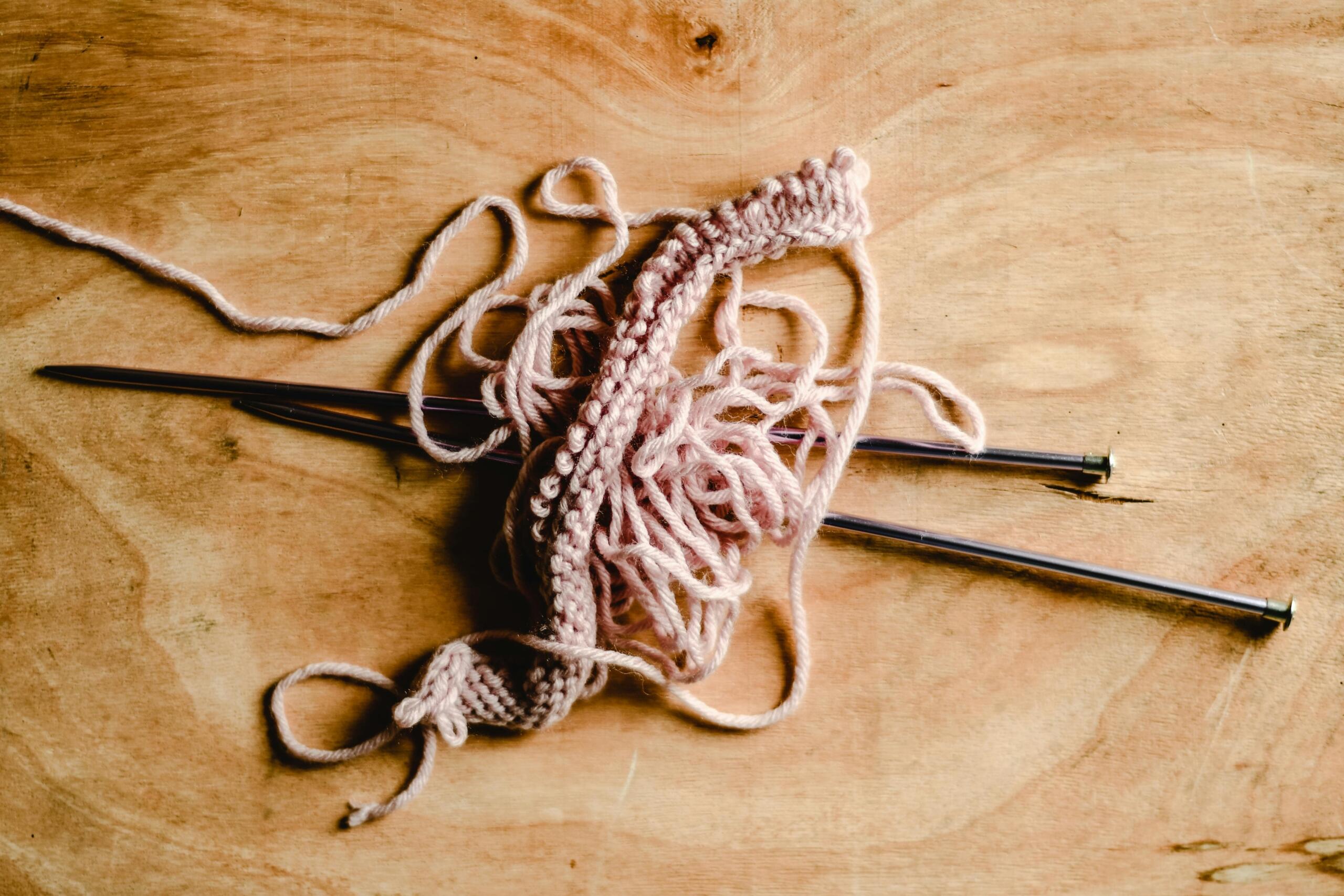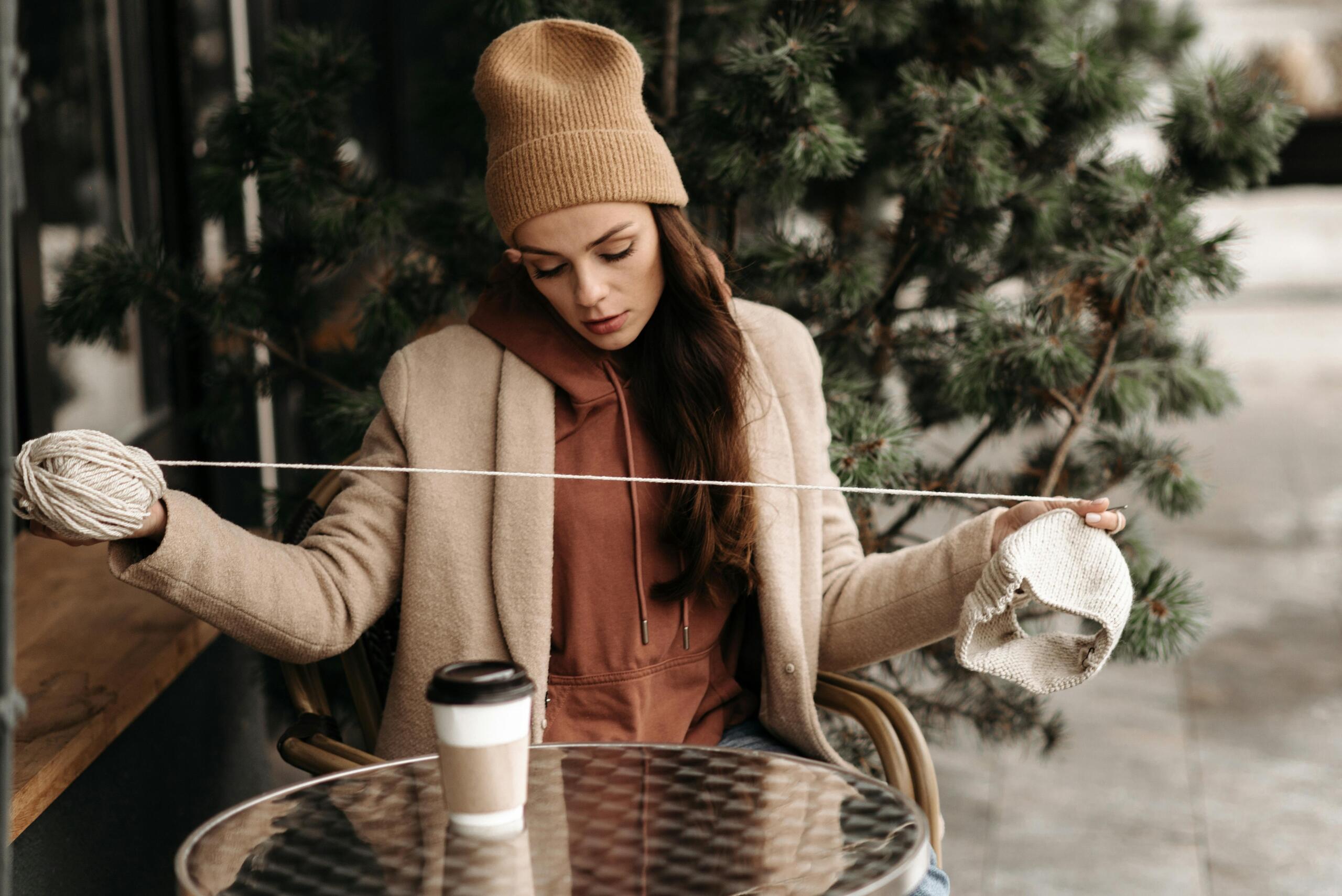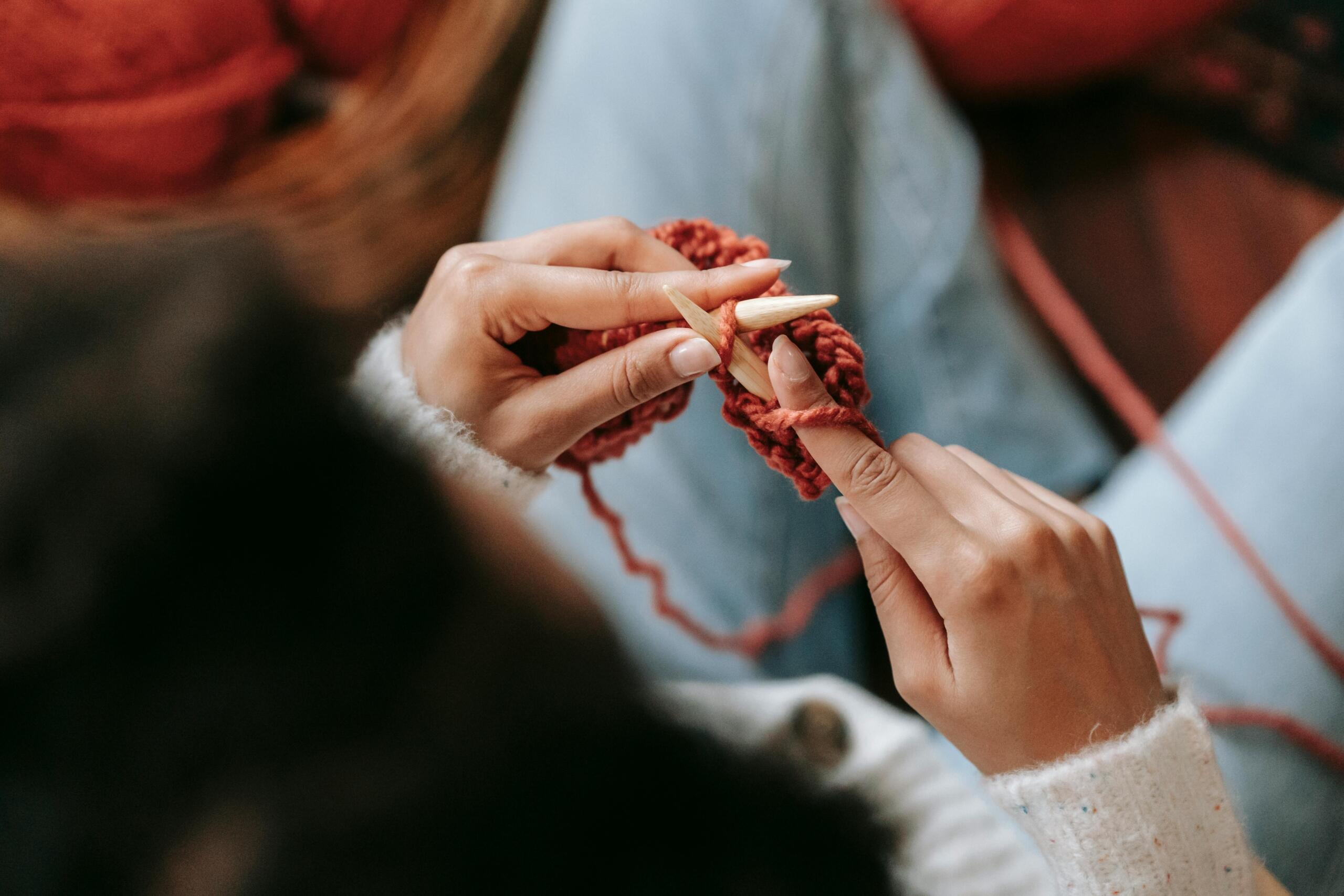From crafting socks and weaving scarves to intricate sweaters and stylish cardigans, many people aspire to make their accessories and clothing.
The key to achieving this lies in mastering the art of different knitting stitches! From purl stitch to other various needle techniques, and rows, the world of knitting is rich with many technical terms and methods.
For beginner knitters, there's a plethora of terminology and techniques to grasp. From the basics like the left loop to more complex stitches like the garter stitch, there are many knitting techniques to grasp. More than ever, as interest in crochet grows, the many advantages of casting on with two needles are also worth a look.

Before Casting On: Gather All Your Materials
Aspiring to learn purl stitch or various other knitting techniques is a delightful endeavour. However, delving into knitting involves more than just the project itself, it entails acquiring the essential materials before you even attempt to practise your casting on! Being adequately equipped is essential to successfully creating projects. Like other disciplines, knitting necessitates a foundational starter kit, including.
Knitting
needles
A tape
measure
Sewing
scissors
A wool needle
Yarn
Thread
Remember, despite the beauty of the activity, it might not always bring as much enjoyment as anticipated! Even passionate knitters encounter moments of frustration. From counting the number of stitches incorrectly when casting on, to missing a loop and dropping stitches, mistakes are inevitable.
Choosing the Right Needles to Start Knitting
Fundamentally, knitting revolves around a pair of needles. It would be impossible to knit your scarves, jerseys or beanies without them. Choosing the right needles should be the first step in your knitting journey and helps to set the stage for the knitting process. To do this, beginners find it easier to start with circular needles.

The reason that most beginners avoid straight needles is because they are somewhat less practical and could even cause discomfort to fingers. Instead, modern knitters tend towards circular needles, and these can be a real game-changer. Not only do they save time, especially when it comes to creating scarves, but they also eliminate the need to create seams.
Then there are also choices when it comes to the materials needles are made from. In recent times, Bamboo has gained favour over plastic and metal options.
Bamboo has gained favour over metal or plastic, most likely because of their ease of handling.
Ask your knitting teacher for advice on the best video resources to supplement your lessons.
How to Start Knitting Different Stitches: Needle Sizes
Before delving into online videos for knitting patterns and techniques, it is important to consider your choice of needles. Choosing the wrong needle can be problematic for beginners. Try to opt for a needle that is neither too thin nor thick and you will soon notice the advantages. Unfortunately, the wrong size needle can make everything from casting on to knowing how to cast off, in knitting tricky.
Whether you are trying purl stitch or other knitting techniques, having the correct needle size is essential.
Thin needles tend to slip from one's grip more easily and ones that are too large tend to lack flexibility. A good, recommended size is to lean towards a 4 or 5, especially if you are still trying out different knitting techniques.
Choosing Yarn
Before you are ready to learn casting on, and the various knitting techniques, you will need to know how to choose yarn.
Wool stands as one of the primary yarns for knitting, particularly for all different knitting stitches for beginners. One of the most appealing things about knitting is that there is a wide variety of yarn to cater to many different types of projects. From pompom-adorned curtains to beanies, baby blankets and much more, there is a ball of wool for everything.
From alpaca, cotton, mohair and cashmere, the spectrum of yarn is diverse. However, if you are still learning different knitting stitches and how to cast off in knitting, then you could find that certain yarns are less acceptable.
Cashmere, for instance, poses a challenge due to its fragility and difficulty in handling.
Alpaca is a practical choice, which offers warmth without breaking the bank. Unlike pricey cashmere. Merino is popular for its softness despite its delicate nature among wool types.
Now that you know more about the best wool for learning different knitting stitches, let’s dive into the kinds of projects suited to beginners.

Start with an Easy Project
When venturing into the world of knitting, a visit to a haberdashery can provide you with all the necessary tools. Yet, in any new crafting pursuit, the chosen project can significantly shape your progress and perception of the craft in general.
The immediate inclination might be to knit a shawl or a scarf, but in reality, these projects aren't always the most suitable for beginners. At least not initially.
Embarking on such projects too soon can result in a challenging first experience with knitting. Instead, starting with a raglan sweater or a small cardigan (which is simpler than you might imagine) can offer achievable creations that will leave you with a major sense of pride as you learn how to cast off in knitting.
Don’t forget, that a big part of the joy of knitting lies in admiring the fruits of your labour! If you're looking for knitting and sewing classes nearby, check out Superprof for options.
The Sample for Different Knitting Stitches
What exactly is a swatch?
True to its name, a swatch serves as a preliminary test before diving into the knitting of an actual piece. Remember that variations in needle size and yarn quality can lead to significant disappointments once you begin your project.
From ensuring that your needle size is correct to learning how to cast off in knitting, creating a swatch is a wise first step for beginner knitters. Instead of being tempted to overlook this crucial step, take 30 minutes to create a swatch.
Your swatch will show how the tension of your knitting looks and help you to make sure that your needle size is correct..
For sewing classes nearby, explore options on Superprof.
Knitting Kits for Beginners
From mastering the garter stitch to selecting the appropriate knitting needles, some tutorials prove simpler than others. However, if you're just starting out in knitting, you might not always have the necessary materials at hand. This is where knitting kits come in as a highly appealing alternative for beginners.
These kits are packaged as boxes containing not just patterns but, more importantly, the exact materials required to execute them. It's like having tailor-made knitting supplies, almost convincing us that knitting is indeed straightforward!
With each needle tailored to match a specific pattern, what more could you possibly desire? Not much!
Following Patterns as a Beginner

In life, as in knitting, don’t leave loose ends.
Reba Linker
In the world of knitting, the pattern serves as the fundamental blueprint upon which your project unfolds. Yet, for beginners, who are still learning different knitting stitches, and knitting techniques and learning how to cast off in knitting, knowing where to start a row and decode a pattern can prove to be a challenge.
Patterns, whether free online or for a fee, are typically downloadable and accessible across various devices. Regardless of their cost, they usually include several key elements:
How to Start Knitting: Washing
For instance, most wool garments, in particular, don't fare well with the rigours of a washing machine and often benefit from gentle handwashing. While a jacquard sweater might withstand a machine cycle if set to a delicate programme, remember to gradually adapt to this treatment over time.
In the end, remember that knitted items, while satisfying to create, tend to be delicate and require careful handling.
Basic Vocabulary to Start Knitting
Finally, what could be better than to have the tools to help you talk about what you are going to do? Here are some basic terms to better understand a pattern:
- Fold over: finish the knitting by folding over each stitch,
- Stitch: the knots made with the needles,
- Stitch: a set of stitches and rows, which can be used to make patterns such as purl stitch,
- Rib: one edge of the knitted fabric,
- Knitting in the round: knitting without a seam, using circular needles,
- Jacquard: a knit with several colours,
- Decrease/increase: remove or add stitches to the knitting,
- And many more!
With all these tips, you are ready to face your first knitting project, good luck!















